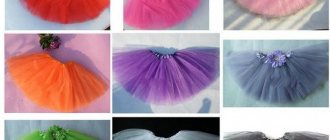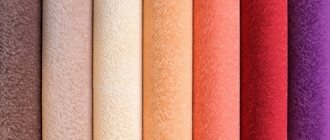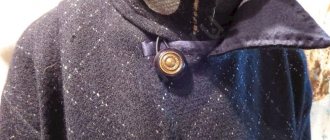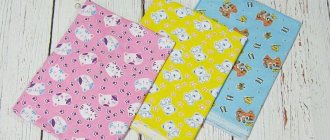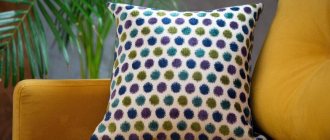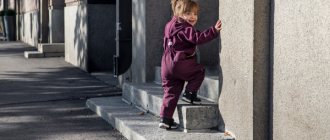Canvas selection, probably one of the most difficult tasks for a beginning artist. The canvas is the basis for your masterpiece, and if select canvas wrong, then the masterpiece may turn out “not right” or simply not work out. When choosing a canvas, you already determine in advance the technique and method of painting. What's the secret? Let's take a closer look at what canvas is and how to choose it correctly.
When choosing a canvas, pay attention to the material. Have you seen the abundance of canvases now offered by art stores and online sites? You shouldn’t choose a canvas at random; a little knowledge will help you decide easily and quickly.
Canvases U.canvas
the “Maestro” and “Etude” brands from the Ukrainian manufacturer U.canva, I have never come across a low-quality canvas, although I very often make purchases in online stores, which means I cannot check the product before purchasing . The canvases are always well and beautifully packaged with protective film, the canvases in packs are packed with sheets of cardboard, and the parcels are packed in durable cardboard boxes. Also, online stores often have promotions and discounts for the holidays, which is also very nice. In general, I am very pleased with the quality of the products and the service.
Handmade canvas from U.canvas
How to choose a good canvas?
Next, I’ll tell you in more detail what exactly you should pay attention to when buying canvas.
High quality primed cotton canvas to be stretched over a stretcher
The first is the quality of the canvas itself, which is stretched on a stretcher . Carefully inspect the surface of the fabric; its texture should be the same everywhere, without any stripes or spots with a texture that is too smooth or, conversely, with a bunch of “knots.”
If there are no such defects, pay attention to the direction of the canvas threads; they should be parallel to the edges of the stretcher. The fabric should be stretched parallel to the stretcher, and not somehow obliquely or diagonally.
Properties of oil pastels
Thinners for oil painting
Let's talk about thinners for oil painting.
In oil painting, thinners are used for several purposes: for diluting oil paints and artistic varnishes, and for cleaning tools.
There are two types of thinners based on their composition :
1. Terpenes are a class of hydrocarbons of natural plant origin (turpentine, pinene). They are made from various types of pine trees, so they have a corresponding smell.
2. White spirit is a solvent that is obtained by direct distillation of oil.
Typically, manufacturers combine terpenes and white spirit with each other, creating various variations of diluents. But thinners must be used with caution. Excessive dilution of paints with thinners can cause destruction of the paint layer.
After working with thinners, you need to ventilate the room.
For oil painting from thinners, the Tee is best suited.
It is best to wash brushes with a low-smelling thinner. Without water. Just a thinner. White spirit is not the best choice for this, it is toxic. Low-smelling in this case is better, it has almost no odor.
When to cover a painting with oil?
Oil paintings are varnished only after a year. But if the picture was painted to order, what should I do?
In this case, you can give the customer an uncovered painting, while agreeing to meet again after a certain time and varnish the painting, which has already completely dried. Or give the painting only after it has completely dried and been varnished, i.e. after 8-10 months.
Flaxseed oil and compacted linseed oil “Nevskaya Palitra”
Oils are presented in two volumes: 120 and 220 ml.
Flaxseed oil is made from flax seeds by cold pressing. It is kept for a long time to “ripen” and is processed in a special way to remove proteinaceous substances and other inclusions. In painting it is used for diluting paints and as an intermediate layer to improve the adhesion of paint layers.
Adding linseed oil to paints reduces their consistency, improves spreadability and increases brightness. But it should be used with caution, especially in cool-toned paints: excess oil can lead to yellowing of the paint layer over time.
One of the most important properties of linseed oil is its ability to polymerize, i.e., thicken when heated (up to 280-300 C). It is in this way that compacted linseed oil is obtained. As a result of polymerization, the oil acquires the property of drying quickly and producing a film with improved physicochemical properties.
Adding compacted
linseed oil allows you
to increase the shine and transparency of paints
without reducing their consistency. Thanks to this, the compacted oil can be used when working with glaze layers.
Compacted oil differs in its properties from ordinary linseed oil in that its film has less ability to shrink and cause “sagging” (wrinkling), is less prone to yellowing, and is more moisture resistant. At the same time, this oil is less absorbed into the underlying material.
The drying process of the film of compacted linseed oil occurs faster than that of conventional oil. It is less prone to yellowing and more resistant to moisture.
Characteristics of canvas for painting
Canvas made of cotton, linen and synthetic fabric are stretched onto stretchers. Canvases come in fine-grain, medium-grain and coarse-grain. It is impossible to recommend any one type of canvas to everyone, since the canvas is selected based on the assigned tasks.
For beginners, I recommend using fine-grained or medium-grained cotton canvases, or fine-grained linen canvases for their work.
Coarse-grained linen canvas on a stretcher.
I have never used synthetic canvases, so I cannot comment on working on such a surface.
Linen fabric differs from cotton in its greater density and stiffness, as well as knobbiness. Cotton is softer.
Pay attention to the density of the fabric stretched on the stretcher, especially for cotton canvases. You should not buy canvas with a density less than 220 g/m2.
Naturally, the density depends not only on the fabric itself, but also on the soil, its composition, the quantity and quality of primer layers, and sizing.
Abstract painting with acrylic paints: painting a city in the rays of sunset
High quality canvas for painting
In the photo above, the density of the canvas is indicated on the packaging in a red square: 315g/m2. The green box indicates that this canvas is made of cotton, the blue box indicates that it is a medium-grain canvas.
Density is usually indicated on the packaging. Also, conditionally, it can be determined by touch; if you lightly press your finger on the canvas, there should be no dent on it.
If finger pressure marks remain on the canvas, it either has too weak a layer of primer or the fabric is very loose.
On a high-quality primed canvas there should be no gaps, “dots”, “crosses” between the threads, or areas where no primer has been applied.
There are many recipes for compositions for sizing and priming canvases. At the initial stage, you should not experiment too much. It is better to buy canvases with a standard, acrylic three-layer primer - oil and acrylic paint fits perfectly on such a surface.
Linen
The most popular and durable material. The unique properties of flax fiber allow it to be made into fabric of completely different grain sizes, from a very fine and smooth texture to a coarse, coarse-grained one. Linen canvas is very resistant to mechanical damage - its fibers are longer and stronger than, for example, cotton. Due to this, it is less prone to sagging. The disadvantage of using linen for some artists may be the embossed texture of linen fabric
100% linen canvases: Repinsky (large grain), pictorial (medium grain), theatrical (medium grain), fine grain (fine grain)
Canvas stretcher
From the quality of the canvas itself, let's move on to the quality characteristics of the stretcher , which are no less important than the canvas itself.
Canvas for painting with a blind stretcher
Painting stretchers come in two types: solid and prefabricated (modular). It is quite easy to determine the type of stretcher if you look at the canvas from behind. The corners of the blind stretcher are rigidly fastened together with glue (or another method), or additionally fixed with wooden triangles.
Seascape by Aivazovsky “Sunset on the Sea”
Prefabricated (modular) subframe
At the corners of the prefabricated subframe you can see the modules connected to each other. These stretchers come with pegs that are driven into the corners. Using these pegs you can adjust the tension of the canvas on the stretcher.
Modular (prefabricated) subframes have two undeniable advantages:
- On such a stretcher you can always adjust the tension of the canvas if, for example, the canvas sags due to changes in humidity or temperature. In such cases, the wedges inserted into the corners are very carefully tapped with a hammer, thereby increasing the tension of the canvas on the stretcher.
- The second advantage is that the painting on such a stretcher, even if it is large, is very convenient to transport . In such cases, the canvas is removed from the stretcher, and the stretcher is disassembled into modules. The canvas is carefully rolled into a tube and placed in a tube; stretcher modules are also placed inside the tube. Thus, both the canvas and the stretcher will reach their destination safe and sound.
The blind stretcher cannot be disassembled, and the level of canvas tension on it is difficult to change; you have to remove and re-stretch the entire canvas.
Also, please note that the outer corners of the subframe should be smoothed - rounded, that is, there should be no sharp right angles.
Landscape “Sunset over the sea”: painting with a palette knife without thinners
The outer perimeter of the subframe should be slightly raised, and the inner one should go deeper. The canvas is stretched only along the outer rounded edge of the stretcher, and should not touch it anywhere else on the front side.
Subframe with protruding edge
If there is no protrusion on the outer surface of the stretcher, it will be very difficult to write even on the highest quality and perfectly stretched canvas, using any technique, no matter what you choose. The paint will lay down completely differently on the part of the canvas that is in contact with the stretcher, and on the part where it is not. The outline of the subframe will always appear through the paint layer.
Fine grain painting canvas
A few words about priming
Ideal application of any paint is ensured by careful priming of the canvas. Specialized stores usually offer the following soil options:
- oil;
- acrylic;
- water-dispersed.
The first is intended exclusively for oil painting. And for acrylic paints you need a canvas of the last two types (universal). However, professionals prefer three-layer acrylic primer.
Priming is not essential but will greatly improve the uniformity of the application. An artist with skill and experience can prime the canvas himself.
When choosing a canvas, it is equally important to assess the size of the future masterpiece. The density of the base is selected from the working area. Experts recommend buying 220 g/m2 (suitable for most cases) or 280 g/m2 (if the picture is large).
You can read more about choosing the canvas size on Natalia Yurshina’s blog - https://nyblog.ru/kak-vybrat-holst-dlya-maslyanoy-zhivopisi/.
Packing of Canvas for Painting
If the canvas is packaged, this is an aesthetic and practical plus. Some manufacturers pack finished canvases in thin transparent film. I think this is an excellent solution. Through such a film the surface of the canvas is clearly visible and can be thoroughly examined for defects. The degree of tension of the fabric through such a film can also be determined: see if the canvas is sagging under the film.
Canvases in film do not get dirty, they are convenient and not scary to transport even on public transport, they can stand in your house or closet as long as you like - they are not afraid of dust.
Canvas for painting in transparent packaging
It is also important for me that the dimensions of the subframe are immediately indicated - this is very convenient; for some reason, some manufacturers do not do this.
Landscape “Spring Storm”
Painting stretcher with dimensions
I have had both positive and negative experiences in purchasing canvases. For example, once, under the influence of advertising, I ordered 10 canvases for testing (thankfully, no more), on which I felt almost all the possible shortcomings of low-quality canvas and stretcher. The canvases sagged a little, the stretchers were blank with sharp corners, and in addition, several canvases had stripes with defects on the fabric, and the producers clearly spared the primer...
And finally, I would like to say that beginners should not make their own canvases and stretchers, even if you sell excellent modules, soil and canvases.
It will take you too much time and may bring completely unpredictable results. If your stores have quality canvases, buy them without hesitation! This will save a lot of your time and money. Having been inspired by an idea, immediately getting to work is much more effective than starting the creative process with not entirely creative tasks.
Why prime a painting?
First of all, you must understand that primer is not the paint with which we paint a picture, but the base that we put on the canvas before we start painting.
So, why prime your canvas? Surely you have painted walls or hung wallpaper at least once. So, before doing this, you most likely leveled the walls, cleaned them with sandpaper, and covered them with putty. You did all this in order to level the surface of the wall and apply an even layer of paint, or paste wallpaper without roughness or bubbles.
So, with canvas primer it’s about the same. Primer is our putty, which should be applied to make the surface of the canvas smoother and more textured. The primer will also serve as a good binder for the paint and the canvas itself.
Another important point why you should cover the painting with primer is so that the canvas fabric does not absorb a lot of paint. This will save on its consumption, and, accordingly, your money on materials.
There are now both regular and primed canvases on sale. I always advise beginning artists to buy an already primed canvas to save themselves from unnecessary costs. But, if you have been painting for a long time, you can try to prime the host yourself, of course, following all the instructions on the can of primer.
Oil canvas can be coated with a special oil primer consisting of white and an oil thickener. But such a primer will take a very long time to dry, so I would recommend using acrylic primer.
It dries much faster, is more available in stores and is suitable not only for painting with acrylics, but also with oil paints. With such a primer, the surface of your canvas will be smooth, matte and elastic, which will help you in further work when painting.


